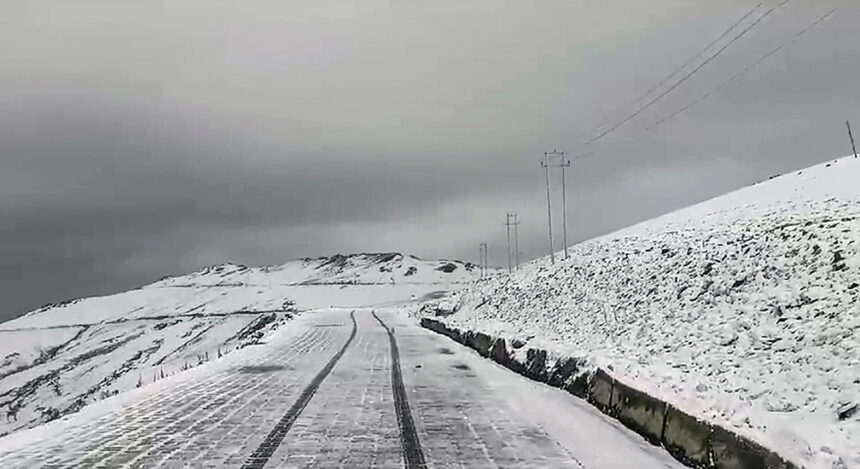Bandipora, Apr 20: The last patches of snow are finally receding from the Razdan Pass, signaling the official opening of Gurez Valley’s much-anticipated tourism season.
For six long months, this remote Himalayan valley in North Kashmir’s Bandipora district remained cut off from the world, buried under six feet of snow that rendered its single access road impassable. With the first tourist vehicles navigating the freshly cleared switchbacks, the valley initiates its precisely timed seasonal transition what has become Kashmir’s fastest-growing offbeat destination.
The opening of the Bandipora-Gurez road each summer marks more than just the return of connectivity—it heralds the rebirth of an entire economy. Hotel owners in the main town of Dawar are busy whitewashing walls and airing out rooms that have been shuttered since October. The local market, which dwindled to just a few essential shops during winter, now buzzes with activity as merchants unpack crates of goods transported during the brief window when the road became passable.
“This is our golden time,” said a local, whose three-story guesthouse overlooks the gushing Kishanganga River. “We have exactly five months to earn what must sustain us through the long winter. Every day counts.”
Gurez’s emergence as a tourist hotspot is a relatively recent phenomenon. Following the 2019 ceasefire agreement along the Line of Control, this once-restricted border area began attracting adventurous travelers drawn to its raw, unfiltered beauty. Where military checkpoints once dominated the landscape, today camera-toting tourists stop to photograph the dramatic vistas of snow-capped peaks reflected in the jade-green waters of the Kishanganga.
The statistics tell a compelling story: From just 2,100 visitors in 2018, the valley welcomed more than one lac tourists last year—an increase that has transformed the local economy. The tourism department projects this number will cross two lac this season, prompting both excitement and concern among residents.
Perhaps the most visible sign of Gurez’s tourism evolution are the colorful clusters of tents that have sprung up along riverbanks and alpine meadows. Dozens of local youth have embraced eco-tourism by establishing temporary campsites that offer visitors an immersive experience without permanent environmental damage.
Among them is 28-year-old Ajaz Ahmad whose camp features 15 Swiss-style tents equipped with modern amenities. “We’re proving that tourism can be sustainable. Each tent leaves no concrete footprint and can be removed without a trace when winter comes.”
Meanwhile, in the village of Khandyal, the Lone family has converted their traditional wood-and-stone house into one of Gurez’s first proper homestays. Visitors here can experience authentic Dard-Shina hospitality, complete with meals cooked on a wood-fired stove and evenings spent listening to folk tales in the local language.
The tourism boom hasn’t come without challenges. The single road to Gurez remains treacherous, with landslides frequently disrupting traffic.
Most pressing is the waste management crisis. “Five years ago, we didn’t even have plastic bottles here,” said a local social activist Lone Arshid. “Now we’re seeing them littered across our meadows.” In response, local youth groups have initiated clean-up drives.
For the Dard-Shina people, Gurez’s indigenous inhabitants, the changes have been profound. Once primarily shepherds and subsistence farmers, many now are affliated with the hospitality. The valley’s unique cultural heritage—from its distinct language to its woolen handicrafts—has become part of its tourist appeal.
With Gurez stands at this crossroads, authorities are grappling with how to manage growth sustainably. The tourism department recently capped hotel permits and introduced strict construction guidelines to preserve the valley’s architectural character.
“For now, Gurez remains delightfully undeveloped compared to Kashmir’s mainstream destinations,” said travel blogger Tulika, who has documented her journey to the valley for 15,000 Instagram followers. “But the clock is ticking. In five years, this place could be completely different.”
With the arrival of summer season, Gurez offers visitors a rare glimpse of Himalayan life unchanged for centuries—even as it stands on the brink of transformation.
Gurez opens its gates to tourists as summer melts winter’s isolation

Leave a Comment
Leave a Comment









